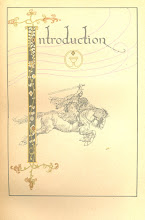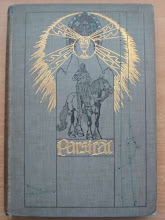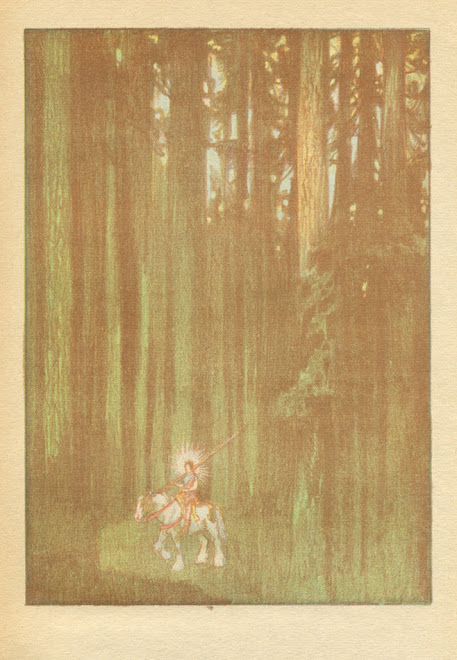Tuesday, September 29, 2009
Mindwalk With Me
I just watched the movie Mindwalk, released in 1990 on VHS. It's never been reissued on DVD to my knowledge and I finally tracked it down on EBay at a price I was willing to pay. It's kind of a cult hit, especially among Mensa types, and copies can go for as much as $100, but I found one for $20 and snapped it up. I've been wanting to see it for a while, especially since I went to Mont St. Michel last summer - except for one brief scene at the beginning, the entire film was shot on location there. It's a deceptively simple film, almost more like a play, featuring a rambling conversation between a female Norwegian physicist (Liv Ullmann), an expat American poet/actor/playwright living in Paris (John Heard) and an American Senator and recently defeated presidential candidate (Sam Waterston). I was amazed at how timely the topics were, with the dialogue including commentary on global warming, international economic issues and sustainability, all of which have grown even more critical since the film was made almost two decades ago. The movie opens with Waterston calling Heard in the aftermath of the election and asking if he can visit the poet, his speechwriter in past years, in France, with the ulterior motive of recruiting him to rejoin the politician's staff. The men drive up to the cathedral and meet the physicist there, their mutual introduction setting off a two-hour discourse of ideas. Ullman's scientist is the voice of conscience and holistic consciousness and speaks passionately about the importance of ecology and ethics in human affairs. Waterston and Heard listen to her with a growing respect throughout a walk that weaves from the high gothic cathedral of St. Michael to the beach above the mudflats of the Bay of Normandy which surround the holy isle. The central premise of the film, whose script is based on the book The Turning Point by Fritjof Capra, is that Cartesian rationalism had its place in its era as a philosophical catalyst which made possible a new perceptual model of the world, and that that model served to bring humanity into the modern age. However, as the physicist articulates, that model has now worn out and needs to be replaced by a newer one, because its mechanistic approach is too reductive for the complexity of organic life and the pressing demands of the present day, a time when technological knowledge has outrun wisdom. The scientist maintains that man must make another perceptual paradigm shift in order to accomplish the imagining of the needed model. She's struggling with that on a personal level as well as an abstract one - she is in a crisis of faith and is on a perhaps-permanent Sabbatical from her work, because an X-Ray laser that she invented for medical applications was corrupted into a component in the Star Wars missile defense system. To paraphrase her words, that "blew her mind," and she retreated to the simplicity of the isolated medieval monastery to settle her thoughts and achieve some clarity about her future direction. She and the two men are all in some degree of midlife crisis. Each seems to feel like a failure in one way or another. The poet is published, but not well-known or financially successful (he says he sold 12,000 copies of his poetry book, which impressed me, but, hey, it's a movie) and the Senator, having lost his bid for America's highest public office, is retrenching and figuring out his priorities. The discussions which occur directly between him as the voice of pragmatism and the physicist as that of higher human aspiration are especially effective. She criticizes politicians for their one-track worldview, but he lays out the reality of Washington as a place where you have to pick your battles if you hope to get anything done at all. She admits that she lives in an ivory tower, and he invites her down into the brawl by offering her a job as an advisor to his office. Their interaction, especially the scenes where she tries to explain quantum physics and the subatomic world to him, is like an allegorical meeting of the sacred and the profane. As allegory reached its height of refinement and popularity in the literature of the Middle Ages, using the conceit in the medieval setting of Mont St. Michel is a stroke of genius, a construct which carries a powerful psychological punch. The character of the poet is the foil to the other two and a conduit for their energy. He's a holy fool figure, also a popular medieval construct, who provides reflection and comic relief, drawing off some the tension of their polarized dynamic and defusing it. The politician represents power - he is in a position to hire the other two, and he makes policy for the government that can affect the course of global events. He's a personification of the world, the male realm of privilege and prestige, but there are limits to his power, as his electoral defeat shows, and as demonstrated by his befuddlement in the face of the feminine force of nature who communicates to him the strangeness of the quantum field. To his credit, he at least tries to understand her, perhaps a hopeful sign for a favorable outcome in the real world over the long term. For another medieval comparison, all of the characters remind me of the colorful people in The Canterbury Tales. They drop in, tell their stories, and go on about their business. They are on a pilgrimage of sorts, and we see only the part of their life's journey concerning our tale. The midlife crisis motif in the film is a highly creative symbol for the state of modern man - outgrown of the primitive stage that marked his childhood, the bright and shiny reason he thought would solve his adult problems has fallen short, and he must find a way to reinvent himself and forge a better future for his race. The film ends as suddenly and ambiguously as it began, with no firm decisions made, but with much thought provoked. The last line alludes to the title of the originating book - as he and the poet walk back to the car, the Senator muses to himself that he may have reached some kind of seminal "turning point." I have also been reading a book by C.S. Lewis that synchronistically resonates for me in context with this film. It's called The Discarded Image, and it concerns exactly that medieval model of the world which Descartes' rationalism and Newton's modern science replaced. That model is of especial interest to me, because it's the foundation of the ascent mysticism that I've devoted myself to studying lately (please see my earlier posts on the topic - it's coalescing as the absolute core of my own work and I've gone on about it quite a bit). It placed the Earth at a remove from the rest of the cosmos in a way that is actually kind of bewildering. Lewis described it as making man almost suburban in his geographic relation to the universe. This medieval natural order sets the earth and its environs in the solar system within a series of concentric circles drawn by the orbits of the near astronomical objects. The transit of the moon marks the boundary between the realm of matter delineated by our world and that of spirit, termed the Empyrean and composed of a substance called aether which is quite different from the gross matter of the lower reaches. Aether can best be conceptualized as something approaching primordial light, and its regions are those where God and His angels dwell. The hierarchical structure of these realms is an inversion of how the universe appears to us from our perch on the rocky earth. We seem to be at the crux with the heavens whirling around us, but in actuality we are the ones rotating around the Empyrean, the true cosmic axis (another kind of turning point). One metaphor Lewis gives for this is that of a wheel: if God is at the hub, the point around which the created cosmos spins, then man is at the far rim of the wheel, the edge which whirls the most furiously. We suppose ourselves to be the center of the universe, but that is but our self-involved perspective - we are really very far from the true center, God, and are spinning madly and dizzily in the outer darkness. We brought that on ourselves according to this model, because we have Fallen: our own actions served to cast us centrifugally away from the Source, and it's our job to climb back if we can, hence the ascent. In this worldview, we are almost powerless in the face of the spiritual forces that run the cosmos, our only real tools being faith and free will. The Cartesian view is nearly the exact opposite. Because it posits life as mechanical, man can hope to master it. The systems theory propounded in Mindwalk offers a different path from either of these by providing man with a way to work with the universe to mutual benefit. Man can use his inherent connection to all of life, a fact described beautifully by the scientist in her discussions of quantum physics, to create a sustainable means for himself to prosper while having as little negative impact as possible on the rest of the interrelated web. This could be called the organic path, as opposed to the older spiritual or mechanical one, and it involves co-existence and stewardship rather than domination or abject submission. As a model for man's future, I think it holds great promise, and I believe at least some of humanity has already woken up to it. The symbol of Mont St. Michel is actually a perfect illustration of the kind of interaction man could best have with his world. It was a barren rock in the bay until a priest had a vision from St. Michael to build a church there; hence it signifies the civilizing influence man can have on the raw environment, motivated by spirit and aimed toward mastering matter. The cathedral is a marvel of engineering that utilizes the rock itself for its building materials. The island sits balanced between the four elements - earth, sky, air and water - like an archetypal example of an alchemical ideal. It has been employed before as the image of the Holy Jerusalem, a perfect city and mankind's true home. I myself used its first sighting by the Grail Knight in my book Parsifal to foreshadow the eventual restoration of God's order upon the earth. What better icon to represent man's striving toward unity than a city built by divine directive and seamlessly integrated with its environment? Mont St. Michel is elemental and civilized, sacred and profane - commercial shops line its lower streets but the ascending approach to the cathedral is spiritually colored indeed. The hues of its stained glass reflect the blue and gold light of the bay and the sky and the warm green and brown of the earth. It's built on an island, not tethered to the mainland, so it belongs to everyone and to no one. It stands on rock, but floods with water and sand constantly washes around its very foundations. It's lasted hundreds of years and seems both solid and eternal, but to God it's a city built upon a single grain of dust. It's homely and transcendent and I've never been happier anywhere in my life. Doesn't that sound like heaven on earth? The meeting point of the book and film is the mechanistic model of Newton and Descartes (for my own holy fool moment of levity, perhaps we could call it The Descartes Image?). The book outlines the model which preceded it, the medieval spheres of matter and spirit divided symbolically into the realms found below the moon and above it; the film hints at the model which must inevitably follow it, hopefully a unification of all such duality into cosmic oneness. Man is not the master of life, but he doesn't have to be its helpless victim, either, and he has been assigned a dynamic role to play in Creation. It's our responsibility to figure out how to live that role to its highest and fullest potential. It would be very interesting to look down from the aethereal heights five hundred years from now and see what model finally came to define our age: a stubborn clinging to rationalism that ignores all other modes of thought or a flowering of conciousness that ushers in a new Renaissance. I'll leave you with a final image of the glory of Mont St. Michel to hopefully stir you towards your own perceptual shift: http://en.wikipedia.org/wiki/File:Mont_Saint_Michel_bordercropped.jpg More info on Mindwalk: http://en.wikipedia.org/wiki/Mindwalk http://www.imdb.com/title/tt0100151/ More info on The Discarded Image: http://en.wikipedia.org/wiki/The_Discarded_Image http://www.amazon.com/review/R1FF231EYZBIGQ More info on Fritjof Capra and The Turning Point: http://en.wikipedia.org/wiki/Fritjof_Capra More info on Mont St. Michel: http://en.wikipedia.org/wiki/Mont_St_Michel
Subscribe to:
Post Comments (Atom)









2 comments:
wow. best analysis of the mensa (great reference) classic mindwalk ever!
Thank you very much.
I apologize for taking so long to respond, I was out of town when you posted your comment, and missed the email notice in the flood of messages I received while I was away.
Post a Comment